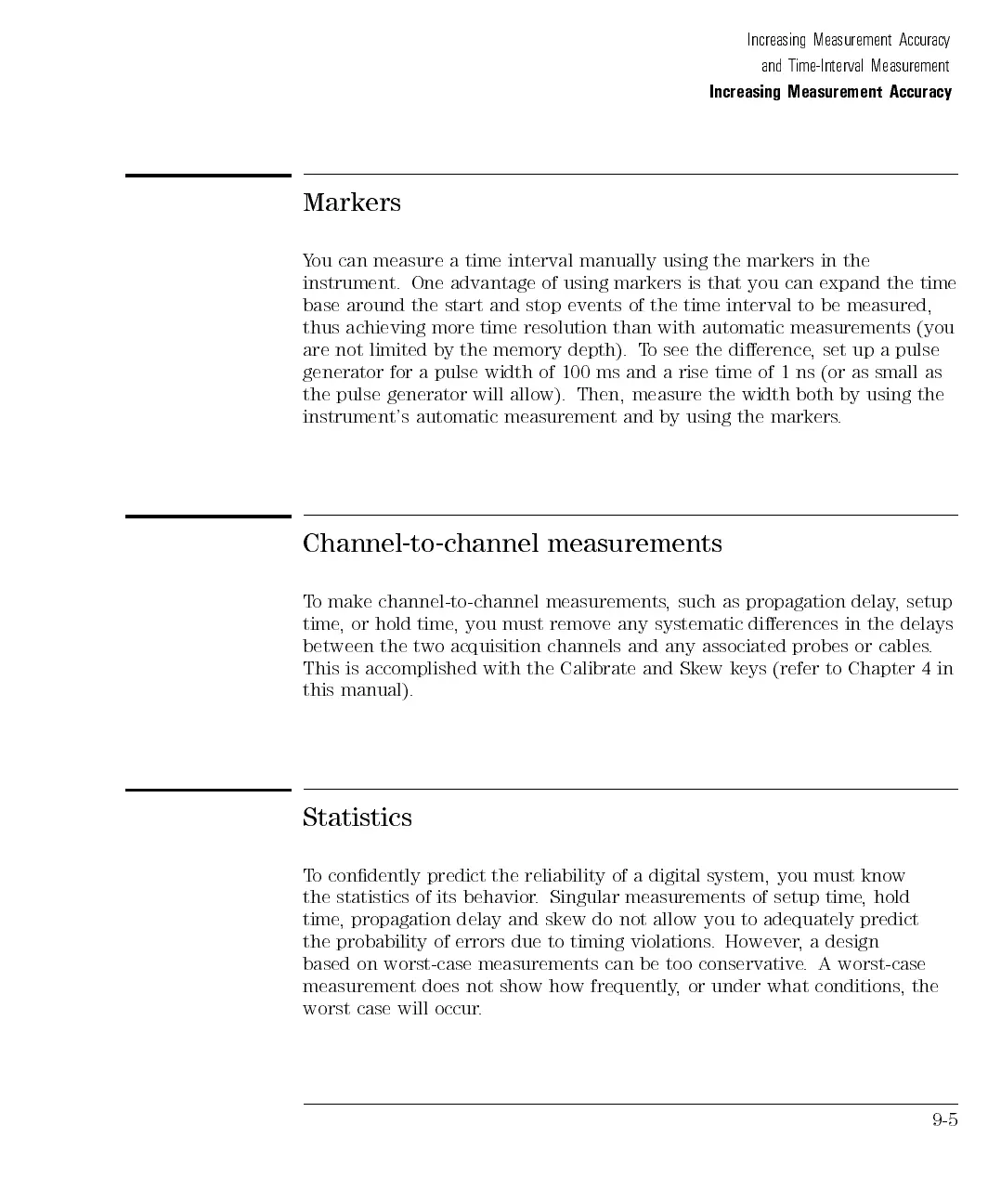Increasing Measurement Accuracy
and Time-Interval Measurement
Increasing Measurement Accuracy
Markers
You can measure a time interval manually using the markers in the
instrument. One advantage of using markers is that you can expand the time
base around the start and stop events of the time interval to be measured,
thus achieving more time resolution than with automatic measurements (you
are not limited by the memory depth). To see the dierence, set up a pulse
generator for a pulse width of 100 ms and a rise time of 1 ns (or as small as
the pulse generator will allow). Then, measure the width both by using the
instrument's automatic measurement and by using the markers.
Channel-to-channel
measurements
T
o
make
channel-to-channel
measurements
,
such
as propagation
delay
,
setup
time
,
or
hold
time
,
you
must remove
any
systematic
dierences
in
the
delays
between
the
two
acquisition
channels
and
any
associated probes
or
cables
.
This
is
accomplished
with
the
Calibrate
and
Skew keys
(refer to
Chapter
4
in
this
manual).
Statistics
T
o
condently
predict
the
reliability
of
a
digital system,
you
must
know
the
statistics
of
its
behavior.
Singular
measurements
of
setup
time
,
hold
time
,
propagation
delay
and skew
do
not
allow
you
to
adequately
predict
the probability of errors
due to timing violations
. However, a design
based on worst-case measurements can be
too conservative
. A worst-case
measurement does not show how frequently
,
or under what conditions
, the
worst case will occur
.
9-5

